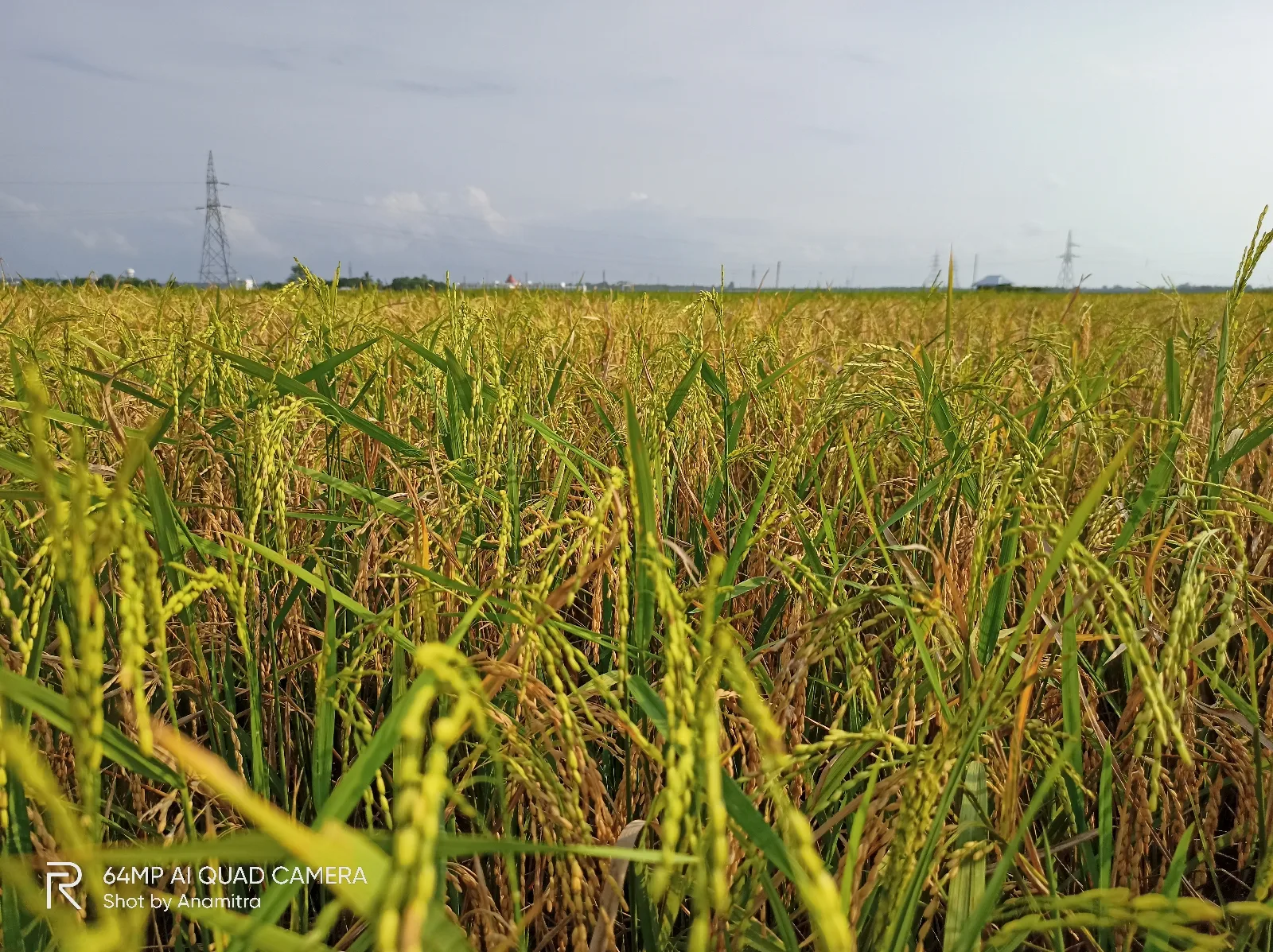Introduction:
The sight of lush green paddy fields stretching as far as the eye can see, adorned with golden heads of ripened rice(paddy), is a captivating spectacle that evokes a sense of abundance and agricultural beauty. Rice fields, with their vibrant hues and symmetrical patterns, are not only visually stunning but also hold deep cultural and economic significance. In this article, we will explore the enchanting world of green and golden rice fields, delving into their cultivation, ecological importance, and the invaluable role they play in nourishing communities around the world.
Cultivation and Agricultural Significance:
Paddy cultivation is an ancient practice that has shaped civilizations and livelihoods for centuries. Green and golden rice fields are a result of meticulous planning, careful water management, and the labor-intensive process of planting and nurturing rice crops. The fields are carefully leveled and divided into plots, each flooded with water to provide the necessary growing conditions for rice plants.
Green rice fields, with their vibrant foliage, represent the stage of growth when the rice plants are maturing. The lush green color signifies the health and vitality of the crops as they absorb sunlight and convert it into energy through photosynthesis. These fields reflect the hard work and dedication of farmers who tend to the crops, ensuring a successful harvest.
As the rice(paddy) plants near maturity, the fields transition into a stunning golden hue. The golden color signifies the ripening of the rice grains, indicating that they are ready to be harvested. The fields transform into a shimmering sea of gold, creating a breathtaking panorama that celebrates the fruits of the farmers' labor.
Ecological Importance and Sustainability:
Beyond their aesthetic appeal, green and golden paddy fields hold significant ecological importance. Rice fields serve as critical wetland ecosystems, providing habitat and sustenance for a diverse range of plant and animal species. They act as a haven for migratory birds, insects, and various aquatic organisms.
Furthermore, rice fields play a crucial role in water management and conservation. The carefully controlled flooding of the fields not only supports the growth of rice plants but also acts as a natural purification system, filtering and retaining water. This helps in replenishing groundwater supplies and mitigating the impacts of droughts and floods.
In recent years, sustainable rice(paddy) cultivation practices have gained prominence, aiming to minimize environmental impacts and promote long-term sustainability. These practices include using organic fertilizers, water-saving techniques such as drip irrigation, and implementing integrated pest management strategies. By adopting these approaches, farmers can reduce the use of chemical inputs, conserve water resources, and protect the delicate balance of ecosystems surrounding rice fields.
Cultural Significance and Community Livelihoods:
Green and golden rice(paddy) fields are deeply ingrained in the cultural fabric of many societies. Rice holds immense cultural significance, symbolizing prosperity, nourishment, and fertility in numerous cultures around the world. Rice farming traditions are passed down through generations, preserving ancient knowledge and fostering a strong sense of community identity.
Rice(paddy) cultivation is also pivotal in sustaining local economies and livelihoods. Many rural communities rely on rice farming as their primary source of income. The cultivation, harvesting, and processing of rice provide employment opportunities for farmers, laborers, and those involved in the rice industry, contributing to the economic development of regions where rice is a staple crop.
Nourishing Communities and Global Food Security:
The green and golden rice(paddy) fields are not merely a picturesque landscape; they are the source of sustenance for millions of people worldwide. Rice is a staple food for more than half of the global population, particularly in Asia, where it forms the foundation of diets and culinary traditions. The harvest from these fields helps to alleviate hunger and provide essential nutrition to communities.
In recent years, efforts have been made to enhance the nutritional value of rice through biofortification. Golden Rice, for example, is a genetically modified variety that contains beta-carotene, a precursor of vitamin A. This innovation aims to address micronutrient deficiencies, particularly vitamin A deficiency, in regions where rice is a primary dietary component.
Ending:
The green and golden rice(paddy) fields, with their vibrant colors and abundant harvests, embody the essence of agricultural beauty and sustenance. They are a testament to the skill, dedication, and harmony between humans and nature. These fields are not only visual masterpieces but also vital ecosystems, cultural icons, and the lifeline of communities worldwide. As we admire the green and golden rice fields, let us appreciate the hard work of farmers, the richness of our agricultural heritage, and the profound impact these fields have in nourishing our bodies and souls.


















0 Comments
If you have any doubt let me know.